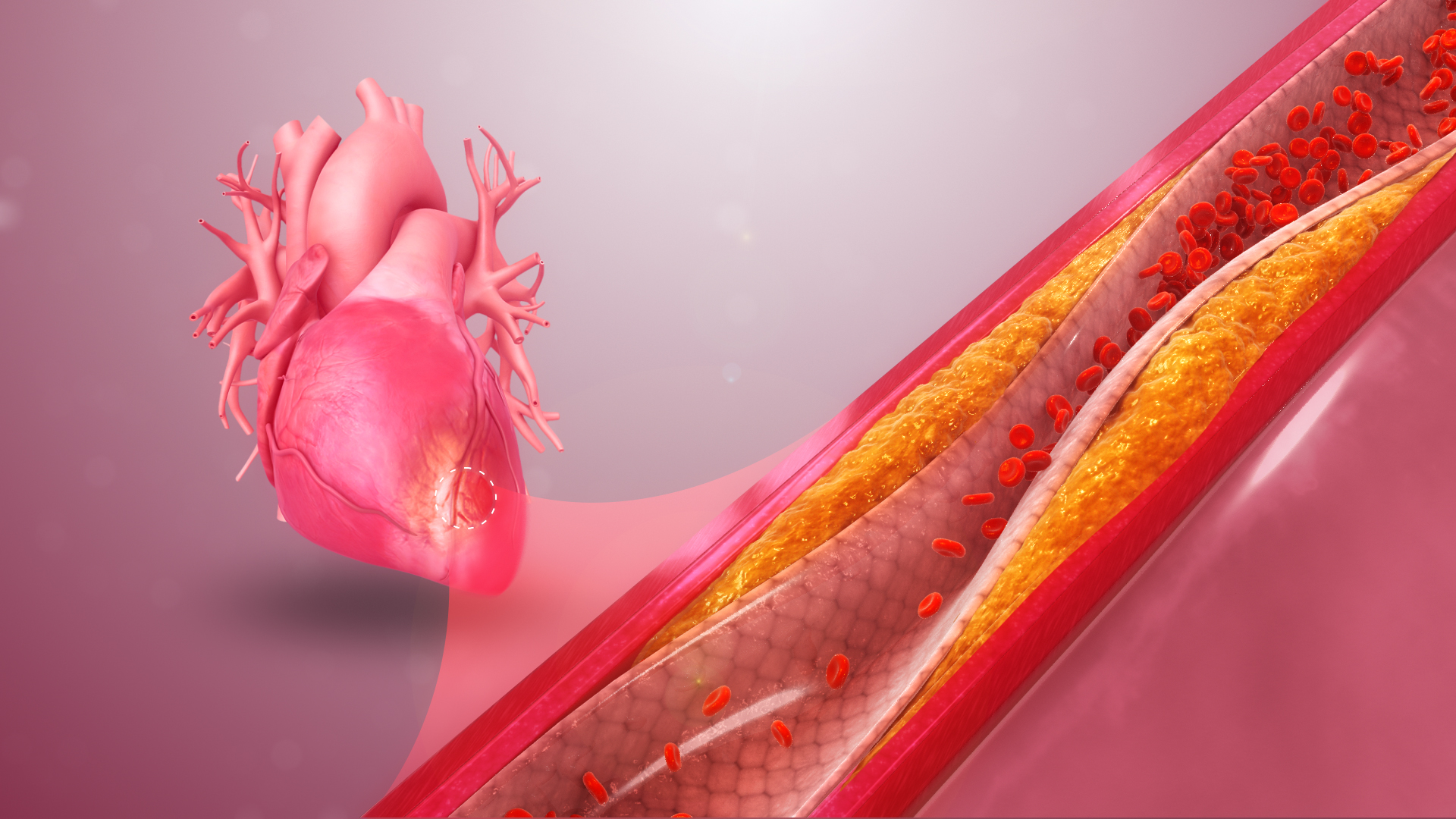A comprehensive guide to Acute coronary syndrome
A blockage that causes blood flow to your heart to suddenly slow or stop can result in acute coronary syndrome (ACS), a potentially fatal illness. Heart attacks or unstable angina can occur in people with ACS (myocardial infarction). Chest pain or pressure (angina), dyspnoea, or light-headedness are typical symptoms.
What occurs in acute coronary syndrome?
Your heart is a muscle that requires an ongoing supply of blood that is rich in oxygen to function effectively. This blood is supplied by the smaller channels of the coronary arteries.
Sometimes, a slow build-up of cholesterol and fat (plaque) causes your arteries to stiffen and constrict (atherosclerosis). This plaque can rupture or break open quickly, resulting in acute coronary syndrome.
A blood clot forms over the entrance, narrowing or obstructing blood flow to the myocardium, a section of your heart. Oxygen supply to the heart is inadequate. Ischemia, or the lack of oxygen, destroys the heart muscle and causes unstable angina or heart attacks.
What are the symptoms of Acute coronary Syndrome?
- Burning
- Numbness
- Tightness
- Aching
- Heaviness
- Pressure
What are the diagnostic tests for Acute Coronary Syndrome?
- ECG: Measures the electrical activity of the heart to look for any anomalies that might point to acute coronary syndrome.
- Blood tests: Examinations for biomarkers that are released into the circulation when the heart muscle is damaged, such as troponin and CK-MB.
- Cardiac Catheterization: A diagnostic procedure that involves inserting a catheter into the coronary arteries to examine blood flow and obstructions.
- Coronary Angiography is an X-ray imaging procedure that shows the coronary arteries and any obstructions by using a contrast dye.
- Stress tests: Physical or imaging examinations that mimic activity to assess the heart’s blood flow and find any obstructions.
- Computed Tomography Angiography (CTA): A non-invasive imaging test that produces precise pictures of the coronary arteries using X-rays and computer processing.
- Magnetic Resonance Imaging (MRI): An imaging technique that produces images of the heart and blood arteries using a high magnetic field and radio waves.
- Positron Emission Tomography (PET) is a nuclear imaging test that creates images of blood flow to the heart muscle using a small amount of radioactive material and a specialised camera.
Treatment options for Acute Coronary Syndrome
- Medical Management: Includes the use of medications such as aspirin, anticoagulants, beta-blockers, ACE inhibitors, and statins to manage symptoms, prevent blood clots, and reduce the risk of recurrent events.
- Interventional Procedures: Angioplasty and coronary artery bypass surgery are used to treat Acute Coronary Syndrome by restoring blood flow to the heart muscle.
- Lifestyle Changes: Incorporating regular exercise, healthy eating, stress management, and quitting smoking can help reduce the risk of Acute Coronary Syndrome and improve overall health.
- Cardiac Rehabilitation: A comprehensive program designed to help patients recover from Acute Coronary Syndrome and improve their heart health through exercise, education, and support.
- Device Therapy: Implantable devices such as cardiac defibrillators and pacemakers can be used to treat heart rhythm problems associated with Acute Coronary Syndrome.
Conclusion
At Altor Hospital, our team of expert cardiologists and healthcare professionals is dedicated to providing the highest quality care for patients with Acute Coronary Syndrome. With a focus on evidence-based medicine and patient-centred care, we offer a comprehensive range of diagnostic and treatment options, including medical management, interventional procedures, lifestyle changes, cardiac rehabilitation, and device therapy.
Our goal is to help our patients recover from Acute Coronary Syndrome, improve their heart health, and reduce their risk of recurrent events. We believe that through education, awareness, and ongoing care, we can make a positive impact on the health of our community and help our patients live their best lives.

